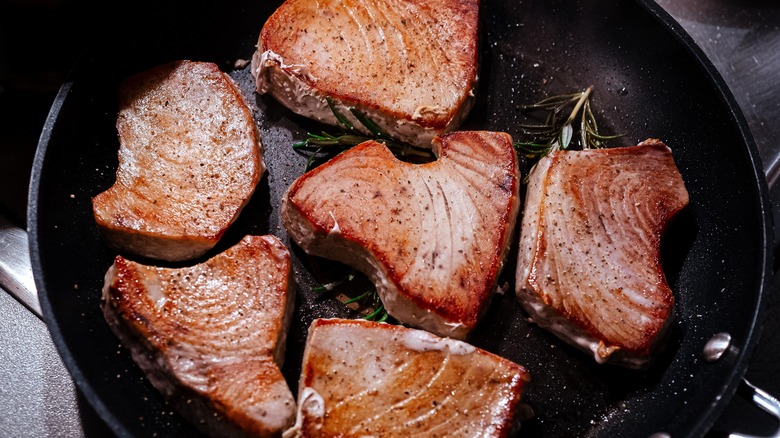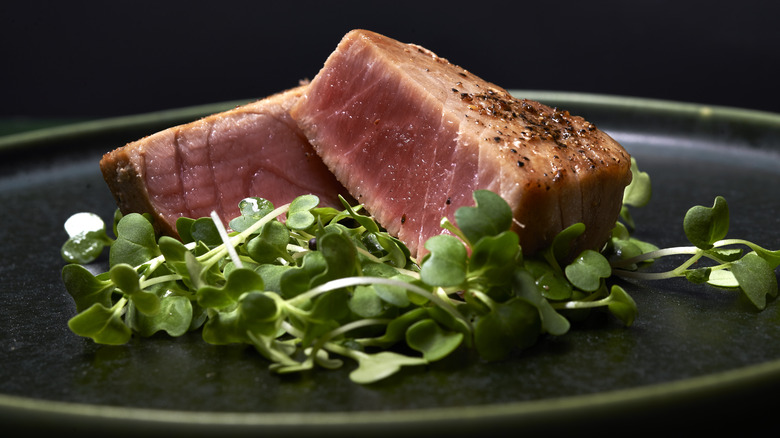The Biggest Mistake You're Making When Searing Ahi Tuna Steak
A seared tuna steak is a culinary experience like no other. When perfectly cooked, it has an ever so slightly charred crisp on the outside with decadent caramelized edges. Crack through that and reach the tender, subtly sweet, umami freshness of the center. This aforementioned perfect cook is easy enough to achieve, but it does require some specific know-how on each step, from buying your ahi tuna steak to plating it. The biggest, most important consideration all those steps impact is cooking time and temperature — the mistake of overcooking tuna steak is one your poor dinner won't recover from.
The reason you don't want to overcook ahi tuna steak is because it can so quickly become completely dry and flavorless. In general, the connective tissue in fish breaks down much faster and easier than it does in beef, so tuna will just lose all of its moisture and texture if cooked a moment too long. Tuna, especially, is quite lean, meaning there's little fat to help slow down that drying-out process.
It is admittedly pretty easy to accidentally overcook tuna. If your steak is too thin, the heat from your stove can tear right through it. If it's too warm before it even hits the pan, it will just continue heating up faster and reach too high of temperatures for too long. Luckily, it's also easy to avoid this overcooking headache by understanding how to cook tuna steak without drying it out and the best temperature for cooking your tuna.
How to never overcook tuna steak again
The first step is buying the right ahi tuna. Choose steaks at least 1 to 1½ inches thick so the outside can sear while the inside remains nearly raw. This is what you want: Cooked, caramelized edges and a deep pink interior. Keep tuna steaks refrigerated from the moment you purchase them until the second you're cooking with them. Not only is this a good food safety practice, but a cold steak will have more resistance to the stove's heat so it won't cook too quickly. The ideal temperature for cooking ahi is 425 degrees Fahrenheit, and it's smart to get your pan to that temperature before dropping the tuna in.
Don't bother coating the skillet in oil as this will just speed up the cooking and possibly burn your tuna. Don't salt it until you're plating it, either, as salt will suck the moisture right out while cooking. When the steak hits 65 degrees Fahrenheit, remove it from the heat immediately — don't even let it sit in the pan off the burner as it will continue to cook. You'll be able to eyeball the tuna's readiness too, because the outside will be browned but you'll see that pink center.
It's that simple — well, it's that simple once you know these steps. From there, your tuna steak is good enough to eat as it is, or you can slice and dice it up to work into all kinds of tuna steak-centric recipes.

